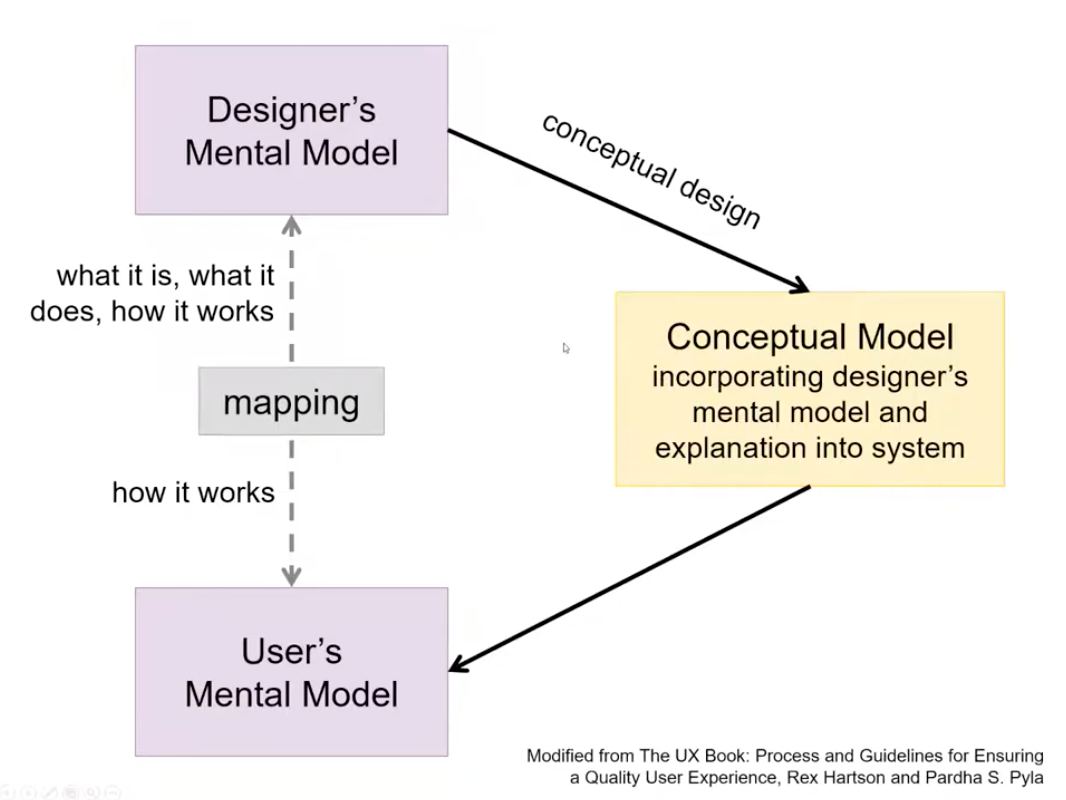Mental models (cognitive frameworks) help us understand how people reason and react to interface experiences. They provide predictive and explanatory power for understanding user behaviour.
It is an inner representation of a system.
2 types:
- Internal frameworks: about the mental process inside user’s head
- External frameworks: account for interactions with technologies, environment, and context
Characteristics:
- constantly evolving
- not always an accurate representation (can contain errors and uncertainty measures)
- provide a simple representation of a complex phenomena
Models are runnable. We use Norman’s seven stage model
- Establish the goal to be achieved
- Form the intention for action (what should I do?)
- Specify the action sequence (how do I do that?)
- Execute the action sequence (let’s see how it goes)
- Perceive the system state (what am I seeing and hearing?)
- Interpret the perceived system state (what’s actually happening?)
- Evaluate the system state (is this right?)
(realistically, this model is only good for exploratory learning when a user is learning a system for the first time or for encountering error cases)
If a breakdown occurs on the left (2-4), we call that the gulf of execution: the difference between the intentions and allowable actions
If a breakdown occurs on the right (5-7), we call that the gulf of evaluation: the difference between the actual system state and user’s understanding
See also: feedback loops
Mental model vs Conceptual model
- mental models: something the user has (forms)
- users “see” the system through mental models
- users rely on mental models during usage
- mental models can support or impede user’s interaction
- conceptual model: something the designer creates
- essentially a high level description of how a system should work
- to foster good mental model formation by the user

Interface Types
Primarily concerned with:
- a function
- interaction style used
- input/output device used
- platform it’s being designed for
E.g.:
- command
- graphical
- multimedia
- virtual reality
- web
- mobile